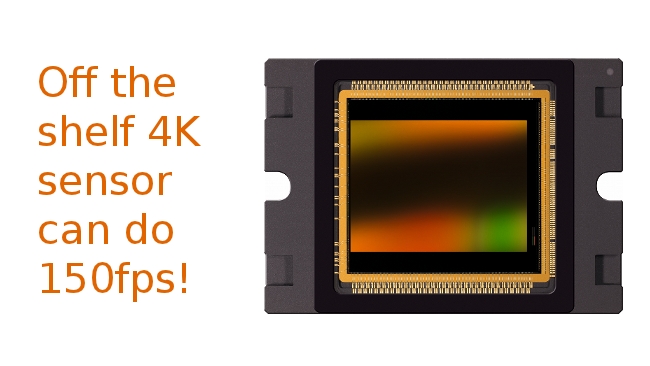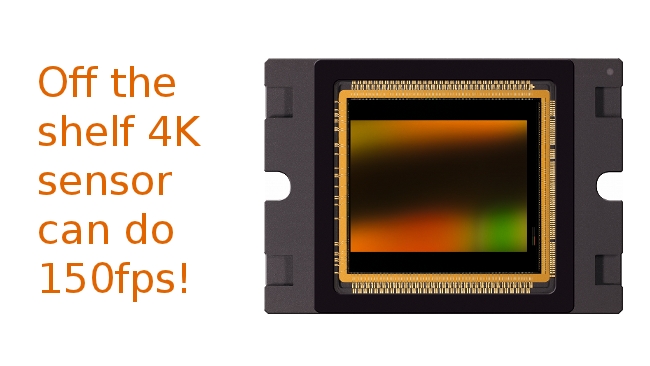

Another "off the shelf" 4K high speed sensor
I previously wrote an article about 4k sensors becoming available off the shelf and that trend is continuing to grow with volume production announced by CMOSIS for their 12-Megapixel (4096 x 3072) CMV12000 sensor. This is the sensor currently proposed for the open source Apertus cameras and CMOSIS are also the manufacturer of the sensor for the Lecia-M digital stills camera. 4k video sensors are basically becoming a standard off the shelf part, so we might expect to see them in a lot of mainstream camera products in the future.
The CMV12000 is being promoted as a Super 35mm / APS-C sensor with a resolution of 4096 x 3072, although it appears to be physically 4:3 sized. If the full sensor could be used for video, it might make for a nice feature for use with anamorphic lenses.
Staggering speed
The sensor can handle a staggering 150fps at 4k resolution although obviously in practice these speeds may well be limited by the rest of the hardware that makes up a camera. There may also be issues with dissipating heat at the higher speeds as the sensor draws more power (3 watts) at full speed, and more power draw tends to result in more heat to dissipate. Power consumption is lower with lower frame rates.
It also features a global shutter so it would seem that it may well become more of a standard feature on future video cameras. At the moment global shutter tends to be a feature of high end cameras such as the Sony F55 but the availability of cost effective off the shelf sensors that feature global shutters means that global shutters may now appear in lower cost cameras. We have already seen the announcement of the 4K Blackmagic Production camera for example.
Trend is toward 4K
The trend would appear to be towards 4k also now being a standard feature on future cameras, because the hardware is becoming viable as a mass produced item as opposed to cutting edge cameras pushing the boundaries of what is easy in the way of current technology.
Tags: Technology


Comments